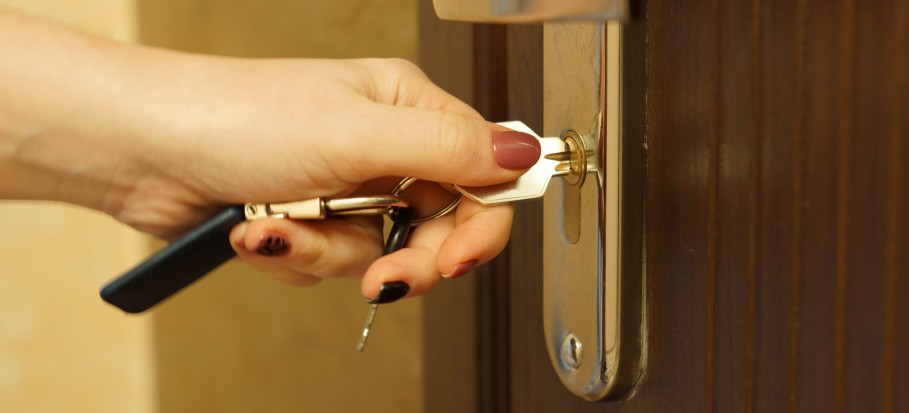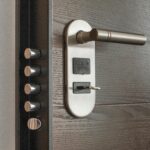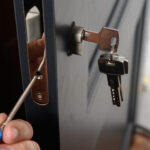Are you wondering whether a locksmith can make a key without the original? In today’s age of advanced security systems and modern lock mechanisms, the loss of a key can be a tough occurrence. Whether it happens at home or in the office, the inability to access essential spaces due to a misplaced or lost key is a common crisis. Fortunately, locksmiths are equipped with the specialized knowledge and tools necessary to duplicate keys even when the original is not available. This expertise is crucial in restoring access securely.
Locksmiths employ several methods to replicate keys without the need for the original. One of the traditional techniques is known as impressioning. Through this method, a locksmith can create a duplicate key by carefully examining and manipulating the lock itself. Let’s learn more about the ability of locksmiths to achieve this and the methods they follow.
Can Locksmith Make Key Without Original?
Yes, locksmiths have the expertise to create keys without the original. Using specialized tools and techniques like impressioning, where they manipulate a blank key in the lock to create the correct shape based on marks left behind, or code cutting machines that generate keys based on lock specifications, they can craft new keys.
Locksmiths can also decode locks or use lock picking methods to access internal mechanisms and determine the necessary key shape. These skills enable them to provide key replacement services even when the original key is lost, damaged, or unavailable, ensuring security and convenience for their customers.

Key Replication Techniques
1. Impressioning
- Impressioning stands as a fundamental technique in the locksmithing store, allowing professionals to craft keys without the original.
- This technique requires placing a blank key into the lock and skillfully steering it to imprint the internal pin configurations.
- With specialized files and tools, locksmiths carefully shape the blank key, moderately refining it based on the marks left by the lock. By iteratively filing and testing the key, they can achieve a functional replica that constantly operates the lock, effectively bypassing the need for the original key.
2. Key Decoding
- Key decoding represents a decent method employed by locksmiths to replicate keys without needing the original. This technique is particularly beneficial when the lock’s code is known or can be determined through specialized tools or software.
- Modern locks often feature codes implanted within their design, which locksmiths can access to acquire precise specifications for cutting a new key.
- Using advanced decoding devices, locksmiths analyze the lock’s internal configuration, including the depths and spacing of the pins.
- This information allows them to create a digital or physical template that guides the precise cutting of a new key. By leveraging this technology, locksmiths can efficiently produce accurate duplicates that seamlessly operate the lock, ensuring clients recover access to their homes or offices without the original key.
3. Cutting By Codes
- Cutting by code is a complex method employed by locksmiths when dealing with locks that lack accessible codes for key replication. In such cases, locksmiths refer to comprehensive databases or manufacturer specifications to derive the precise cuts and patterns required for the new key.
- This method is particularly useful for older or less common lock types where obtaining the original key or accessing internal codes is impractical. Utilizing advanced key cutting machines programmed with the exact specifications, locksmiths can replicate keys with exceptional accuracy.
- These machines interpret the derived code data to precisely cut a new key that matches the unique configuration of the lock’s internal pins and mechanisms.
- This approach ensures that the duplicated key fits seamlessly and operates effectively, providing clients with a reliable solution to regain access to their properties or vehicles without the original key.
| Service Category | Description |
| Assessment | Detailed examination of the lock to collect information such as brand, type and complexity. |
| Impressioning or Decoding | Crafting a new key by making impressions of internal components directly onto a blank key, suitable for traditional pin tumbler locks. |
| Key Cutting | Refers to referencing databases or manufacturer specifications to determine exact cuts and patterns required for key replication, ideal for locks lacking accessible codes. |
| Testing | Crucial phase to ensure the duplicated key operates flawlessly with the lock, verifying accuracy and functionality through repeated tests. |
| Finishing | Refinement of the key’s cuts and adjustments to ensure smooth operation and alignment with the lock’s internal mechanisms post-testing. |
Steps Involved in Making a Key
When a locksmith is entrusted with making a key without the original, several measured steps are involved:
Assessment
Assessment is a critical first step for locksmiths when tasked with duplicating keys without the original. This initial process involves a detailed examination of the lock to gather essential information such as its type, brand, and complexity.
By closely inspecting the lock, locksmiths can identify whether it’s a pin tumbler lock, wafer lock, or another type, each requiring specific techniques for key duplication.
They also discover the brand of the lock, which can provide valuable insights into its design and potential compatibility with standardized key blanks or codes.
Impressioning or Decoding
Impressioning and decoding are two primary techniques locksmiths utilize depending on the specific characteristics of the lock they are working with. These methods are selected based on factors such as the type of lock, its complexity, and the availability of certain information needed for key duplication.
Impressioning involves creating a new key by making impressions of the lock’s internal components directly onto a blank key.
This method is particularly effective for traditional pin tumbler locks where locksmiths use specialized tools to manipulate the key inside the lock, gradually shaping it based on the marks left by the pins.
Key Cutting
Key cutting is the crucial process by which locksmiths transform a blank key into a functional replica based on the specifications obtained from earlier assessment and analysis methods such as impressioning, decoding, or cutting by code.
After determining the necessary cuts and patterns required for the new key, the locksmith employs precision tools designed for accurate replication.
Testing
Once the key cutting process is completed, thorough testing is a critical step that locksmiths undertake to ensure the newly duplicated key functions flawlessly with the corresponding lock.
This testing phase is essential to validate the accuracy and effectiveness of the key replication process, providing assurance to clients that they can regain access to their property or vehicle reliably.
Finishing
Finishing touches in the key duplication process are crucial for locksmiths to guarantee that the newly cut key operates seamlessly and reliably with the lock.
After initial testing, any necessary adjustments or fine-tuning are meticulously performed to refine the key’s functionality and ensure it aligns perfectly with the lock’s internal mechanisms.
Final Understanding
Locksmiths are critical professionals who sustain security and accessibility in our everyday lives through their expertise in key replication, especially when the original key is not available. Their role extends beyond simply duplicating keys; it involves solving complex locksmith challenges with precision and reliability. In conclusion, locksmiths’ ability to replicate keys without the original underscores their expertise and commitment to maintaining security and convenience for individuals and businesses alike. By employing advanced techniques such as impressioning, decoding, and cutting by code, locksmiths ensure that clients receive precise and reliable key duplication solutions tailored to their specific needs. You can contact Locksmith Insight for a detailed summary of the task.
Frequently Asked Questions
Is it possible for a locksmith to make a key from a lock without the original?
Yes, locksmiths can use techniques like impressioning, decoding, or cutting by code to
create a key without needing the original.
What duration does it take for a locksmith to make a key without the original?
The time taken can vary depending on factors such as the type of lock and the method
used. However, locksmiths typically strive to complete the process as quickly as possible
while ensuring accuracy.
Are there any risks involved in key replication without the original?
With skilled locksmiths, the risks are minimal. Key replication without the original is a
specialized service offered by locksmiths to address various lock and key challenges. By
understanding the techniques involved and the expertise required, you can appreciate the craftsmanship and reliability that locksmiths bring to key duplication services.







